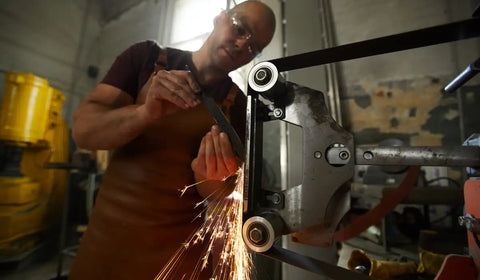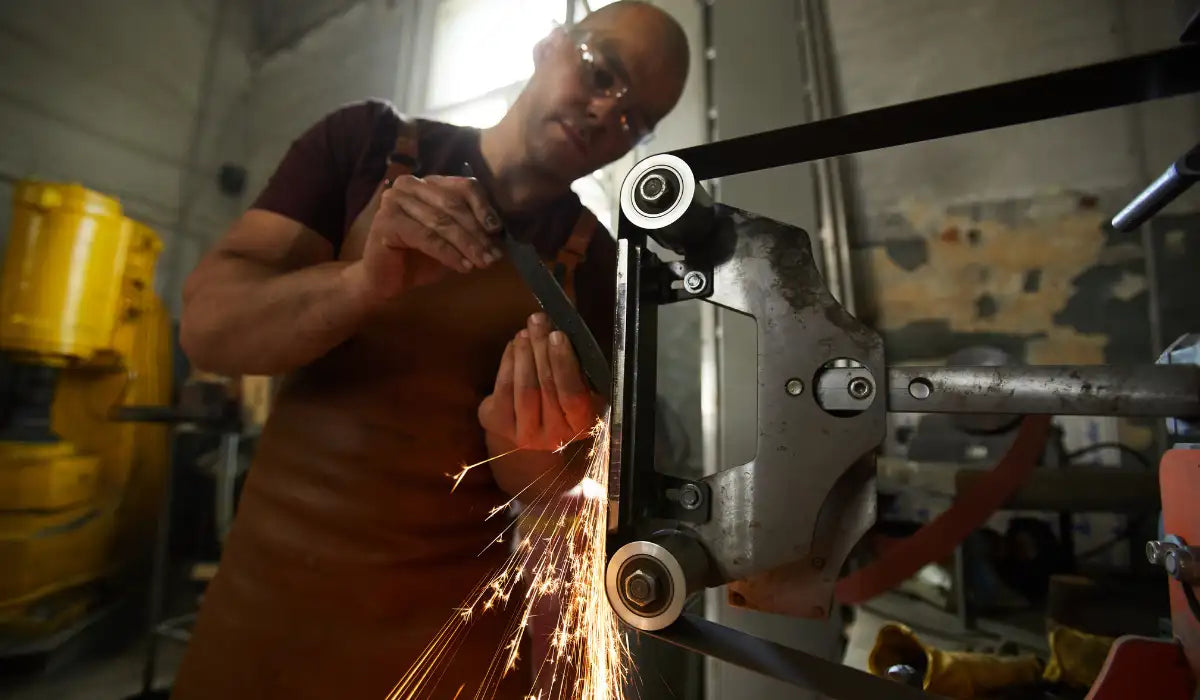The Secrets of Artisan Craftsmanship: Creating Exceptional Handmade Damascus Knives
The world of handmade Damascus knives is a captivating blend of artistry, tradition, and functionality. Each knife embodies the skills of artisans who utilize age-old techniques to produce exceptional blades. These knives are not merely tools; they carry stories of craftsmanship, passion, and dedication. This article aims to unravel the secrets behind creating these extraordinary pieces of art, examining the intricate craftsmanship that defines handmade Damascus knives.
The Legacy of Damascus Steel
Damascus steel dates back centuries, renowned for its distinctive patterns and unmatched strength. Its legacy begins in the Middle East, where blacksmiths discovered how to forge steel from various sources to create blades that were not only sturdy but also visually stunning. Damascus Steel's unique layering process results in beautiful swirls and patterns, making each knife a true work of art. This technique involves folding different types of steel, enhancing both the aesthetics and performance of the blade.
The Art of Forging
The process starts with selecting high-quality steel. Skilled artisans heat the steel until it becomes malleable, and then they hammer it into the desired shape. This traditional method requires immense skill and attention to detail. Once forged, the knife begins to take form; craft is evident in its balance and precision. The forging process not only the knife's shape but also its strength, preparing it for further transformation.
Layering Techniques
To create the iconic patterns of Damascus steel, artisans layer different types of steel. This not only enhances the visual appeal but also improves the knife's performance. Each layer contributes to the overall durability and sharpness of the blade. The result is a knife that is not only functional for various tasks but also a stunning example of craftsmanship that can be passed down through generations.
The Crafting Process of Handmade Damascus Knives
The creation of handmade Damascus knives involves several meticulous steps that highlight the artisan's skill and dedication. Each knife is a labor of love, with artisans often spending hours perfecting each element. The crafting process can be broken down into the following stages:
Selecting the Right Materials
The first step in crafting a Damascus knife is choosing the right materials. High-carbon steel and stainless steel are commonly used, as they ensure that the blade maintains its sharpness and durability. Artisans may also incorporate unique materials for the handles, such as exotic woods, bone, or synthetic composites. This choice of materials is crucial, as it affects both the knife’s aesthetics and functionality.
Forging and Shaping the Blade
Once the materials are set, artisans begin the forging process. This involves heating the steel to high temperatures and then shaping it through hammering. The goal is to create a blade that not only looks beautiful but is functional for its intended use. Forging requires strength and precision, as even the slightest miscalculation can affect the blade’s performance.
Heat Treatment: Ensuring Durability
After shaping the blade, heat treatment is a critical step. The blade is heated to specific temperatures and then quenched rapidly. This process hardens the steel, improving its edge retention and durability. A well-executed heat treatment can significantly enhance the knife’s performance, showcasing the artisan’s expertise in balancing hardness and toughness.
The Finishing Touches: Polishing and Assembly
After heat treatment, the blade undergoes a series of finishing processes. This includes polishing to achieve a mirror-like finish and assembling the handle. The handle is crafted with care to ensure a comfortable grip, utilizing materials that complement the beauty of the blade. Some artisans also incorporate unique designs or engravings, adding a personal touch to each knife.
Importance of Ergonomics
An essential element of knife-making is ensuring that the knife feels right in the user's hand. The ergonomics of the handle play a crucial role in the functionality of the knife. A well-designed handle allows for a secure grip and reduces fatigue during use. This attention to detail demonstrates the artisan’s commitment to creating a tool that is as comfortable as it is beautiful.
Quality Control: Ensuring Excellence
Once the knife is assembled, it undergoes extensive quality control checks. Each blade is inspected for sharpness, balance, and visual appeal. Artisans take pride in their work, often ensuring that every knife meets their high standards before it reaches the customer. This meticulous attention to detail guarantees that each handmade Damascus knife is a reliable and exceptional tool.
The Unmatched Appeal of Handmade Damascus Knives
What makes handmade Damascus knives so appealing? The answer lies in their unique combination of beauty, functionality, and craftsmanship. Collectors and enthusiasts are drawn to the artistry involved in their creation, knowing that each piece is one-of-a-kind.
Uniqueness and Personal Connection
Unlike mass-produced alternatives, every handmade Damascus knife carries an artisanal touch, resulting in unique patterns and designs. This individuality creates a personal connection between the maker and the user, making each knife special. Owners often appreciate the story behind their knife, knowing it embodies not just a tool, but also a part of history and tradition.
Investing in Quality
Handmade Damascus knives are an investment in quality and craftsmanship. The superior materials and meticulous creation process mean that these knives can last a lifetime with proper care. Collectors and users alike value the durability and performance that comes with handmade pieces, often cherishing them as heirlooms to pass down through generations.
Conclusion: Embracing the Art of Handmade Knives
The world of artisan craftsmanship in handmade Damascus knives is a testament to the dedication of skilled makers who pour their heart into every blade. From selecting the right materials to the intricate forging and finishing processes, each knife tells a story, blending functionality with artistry. By choosing a handmade Damascus knife, you not only acquire a superior tool for your culinary or outdoor adventures but also embrace a piece of remarkable craftsmanship. Explore the beauty and functionality of these exceptional knives and discover the pride of owning something truly unique.
FAQ
1. What is Damascus steel?
Damascus steel refers to a type of steel used to create blades that are known for their unique pattern and exceptional durability. The steel is made by forging together different layers of metal, resulting in a beautiful and strong blade.
2. How should I care for my handmade Damascus knife?
To maintain your knife, it is essential to keep it clean and dry after use. Hand wash the blade with mild soap and avoid soaking it in water. Regularly apply food-safe mineral oil to prevent rust.
3. Are handmade Damascus knives suitable for everyday use?
Yes! While they are beautiful collector's items, handmade Damascus knives are also functional tools, ideal for everyday use in the kitchen or outdoors.
4. How can I identify a quality handmade knife?
Look for signs of craftsmanship such as even patterns in the steel, a well-finished blade, and comfortable handle ergonomics. A reputable maker will also provide information about the materials and techniques used.
5. Where can I purchase handmade Damascus knives?
You can find handmade Damascus knives through artisan shops, online marketplaces, and specialized knife shows, where you can often meet the makers themselves and learn about their craft.
For a stunning example, check out the Premium Handmade Damascus Steel Folding Pocket Knife that showcases the exquisite craftsmanship involved in creating these exceptional tools.


